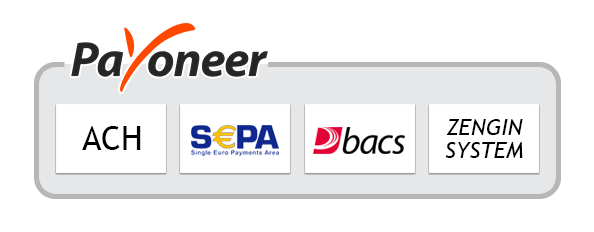Report Overview
The global Agrochemicals market is projected to experience steady growth, with an expected market size of USD 382.1 billion by 2034, up from USD 250.8 billion in 2024, growing at a (CAGR) of 4.3% during the forecast period from 2023 to 2033. The market’s growth is driven by the increasing demand for food production due to the rising global population and changing dietary preferences, which in turn fuels the need for effective crop protection solutions and soil treatment products. Additionally, the adoption of advanced agrochemical products like pesticides, herbicides, fungicides, and fertilizers continues to rise as farmers strive for higher yield and crop protection.
Recent developments in the agrochemical sector, such as the introduction of bio-based pesticides and sustainable fertilizers, are also contributing to market expansion. However, the industry faces several challenges, including regulatory pressures, concerns about environmental sustainability, and the shift toward organic farming practices, which can limit the demand for synthetic agrochemicals.
Furthermore, fluctuating raw material prices and the need for increased research and development in green agrochemicals are ongoing hurdles for manufacturers. Despite these challenges, the continued growth of emerging economies, technological innovations in agrochemical formulations, and the increasing trend of precision agriculture are expected to provide significant growth opportunities in the coming years.
Key Takeaways
- Agrochemicals Market size is expected to be worth around USD 382.1 Billion by 2034, from USD 250.8 Billion in 2024, growing at a CAGR of 4.3%.
- Fertilizer held a dominant market position, capturing more than a 78.30% share of the global agrochemicals market.
- Solid formulations held a dominant market position, capturing more than a 67.90% share of the global agrochemicals market.
- Cereal & Grains held a dominant market position, capturing more than a 49.20% share of the global agrochemicals market.
- Soil Treatment held a dominant market position, capturing more than a 43.10% share of the global agrochemicals market.
- Asia Pacific (APAC) region is the dominant player in the global agrochemicals market, holding a significant share of 52.40%, valued at approximately USD 131.4 billion.
Report Scope
| Market Value (2024) | USD 250.8 Billion |
| Forecast Revenue (2034) | USD 382.1 Billion |
| CAGR (2025-2034) | 4.3% |
| Segments Covered | Product Type (Fertilizer, Pesticide, Plant Growth Regulators), Formulation (Solid, Liquid), Crop Type (Fruits and Vegetables, Cereal and Grains, Oilseeds and Pulses, Turf and Ornamentals, Others), Application Method (Foliar Spray, Soil Treatment, Seed Treatment, Others) |
| Competitive Landscape | BASF SE, Bayer AG, Syngenta, UPL Limited, Nufarm, ADAMA Ltd, Corteva, Inc, Yara International ASA, ADM , Nutrien , K+S AG, Sumitomo Chemical Co., Ltd., Compass Minerals International, Inc, ICL Group Ltd. , Isagro , FMC Corporation, OCP Group, Other Key Players |
Agrochemicals Statistics
Product Type
In 2024, fertilizers dominated the global agrochemicals market, holding over 78.30% of the market share. They are essential for healthy crop growth, providing key nutrients like nitrogen, phosphorus, and potassium. The rising demand for higher crop yields, especially in regions facing food security challenges, has driven fertilizer growth. Fertilizers are used across a variety of crops, including cereals, fruits, vegetables, and oilseeds. The increasing adoption of precision farming techniques has further boosted the demand for specialized and efficient fertilizers.
Formulation
In 2024, solid formulations led the global agrochemicals market with over 67.90% of the market share. These include granules, powders, and pellets, favored for their ease of handling, precise application, and long shelf life. Solid formulations are commonly used in fertilizers, pesticides, and herbicides, offering controlled release and improved effectiveness. Their stability and efficiency make them ideal for large-scale agriculture, where uniform application is crucial. The rising demand for bulk treatments in crops like cereals, vegetables, and fruits has further driven the adoption of solid agrochemicals.
Crop Type
In 2024, cereals and grains dominated the global agrochemicals market with over 49.20% of the market share. This segment includes key crops like wheat, rice, corn, and barley, which are vital for global food production. The high demand for these crops, along with the need for effective pest control and nutrient management, has driven the widespread use of agrochemicals. Farmers rely on fertilizers, pesticides, and herbicides to maintain high yields and quality, particularly in large-scale farming regions.
Application Method
In 2024, soil treatment captured over 43.10% of the global agrochemicals market. This segment includes the use of fertilizers, pesticides, and soil conditioners to enhance soil health, fertility, and crop productivity. Soil treatments optimize the environment for plant growth, preventing nutrient deficiencies and controlling soil-borne pests and diseases. The segment’s dominance is driven by the increasing need for efficient and sustainable agricultural practices, especially in regions with poor or degraded soils.
Key Market Segments
Product Type
- Fertilizer
- Nitrogenous
- Urea
- Ammonium Nitrate
- Ammonium Sulfate
- Ammonia
- Calcium Ammonium Nitrate
- Others
- Phosphatic
- Monoammonium Phosphate (MAP)
- Diammonium Phosphate (DAP)
- Triple Superphosphate (TSP)
- Others
- Potassic
- Potassium Chloride
- Potassium Sulfate
- Others
- Nitrogenous
- Pesticide
- Insecticide
- Fungicide
- Herbicide
- Bio-pesticide
- Others
- Plant Growth Regulators
Formulation
- Solid
- Liquid
Crop Type
- Fruits & Vegetables
- Cereal & Grains
- Oilseeds & Pulses
- Turf & Ornamentals
- Others
Application Method
- Foliar Spray
- Soil Treatment
- Seed Treatment
- Others
Emerging Trends
- Increase in Sustainable and Bio-based Agrochemicals: One of the most significant emerging trends in the agrochemicals market is the shift toward sustainable, bio-based solutions. With growing concerns over the environmental impact of traditional agrochemicals, there is an increasing focus on products derived from natural sources. For example, bio-pesticides and bio-fungicides are gaining popularity as alternatives to synthetic chemicals. These products are less harmful to the environment and human health.
- Growth of Digital and Precision Agriculture: Advancements in digital technologies, such as artificial intelligence (AI), data analytics, and Internet of Things (IoT), are revolutionizing agriculture. The adoption of precision agriculture, which uses technology to optimize field-level management, is rising. These technologies enable farmers to apply agrochemicals more efficiently, reducing waste and improving crop yields.
- Rise in Crop Protection Demand: This has led to increased demand for crop protection products to enhance agricultural productivity. The agrochemicals sector is expected to see a rise in demand for herbicides, fungicides, and insecticides, especially in regions like Asia-Pacific and Latin America, where the agricultural sector is rapidly evolving.
- Regulatory Pressure and Focus on Safety Standards: As environmental and health concerns rise, regulatory authorities worldwide are implementing stricter guidelines for agrochemical usage. The European Union has introduced more stringent regulations concerning pesticide usage, while the U.S. Environmental Protection Agency (EPA) continues to enhance pesticide regulation standards. These regulations are pushing manufacturers to develop safer, less-toxic products with reduced environmental footprints. This trend is fostering innovation in formulations, leading to the development of safer agrochemicals.
- Growing Demand for Organic Farming Inputs: Organic farming is gaining traction worldwide as consumers increasingly demand pesticide-free, non-GMO food products. The global organic agrochemical market is expected to grow at a CAGR of 10.4% from 2023 to 2030. This trend is prompting agrochemical companies to develop products that are suitable for organic farming, including organic fertilizers, bio-based pesticides, and natural soil enhancers.
- Focus on Integrated Pest Management (IPM): Integrated Pest Management (IPM) is gaining momentum as an effective approach to controlling pests and diseases while minimizing the use of chemical pesticides. This approach combines biological control, crop rotation, and the use of resistant plant varieties. The adoption of IPM is increasing, particularly in Europe and North America, due to growing concerns over the overuse of chemical pesticides.
Use Cases
- Crop Protection and Pest Control: One of the primary uses of agrochemicals is in the protection of crops from pests, diseases, and weeds, which can otherwise lead to significant yield losses. According to a report by the Food and Agriculture Organization (FAO), pesticides are used to control over 100,000 species of insects and weeds that negatively affect crop production. Herbicides, for instance, are used to control invasive weeds that compete with crops for water, nutrients, and sunlight.
- Fertility Enhancement for Increased Crop Yields: Agrochemicals such as fertilizers play a crucial role in enhancing soil fertility and boosting agricultural productivity. NPK fertilizers, which contain nitrogen, phosphorus, and potassium, are used to improve crop yields and soil health. These are essential for the growth of crops such as rice, wheat, and maize.
- Sustainable Agriculture and Organic Farming: As the demand for sustainable agriculture grows, agrochemicals are evolving to meet the requirements of organic farming and precision agriculture. There is an increasing trend toward using biopesticides and biofertilizers in organic farming. These agrochemicals are derived from natural sources such as plants, animals, and microorganisms, offering an eco-friendly alternative to traditional chemicals.
- Precision Agriculture and Digital Agrochemical Solutions: Precision agriculture uses technology and data analytics to optimize the use of agrochemicals, improving efficiency and reducing waste. Through GPS mapping and drone technology, precision agriculture helps apply agrochemicals in precise quantities, minimizing chemical waste and reducing the environmental impact.
Regulations on AgrochemicalsMarket
- EU Green Deal and Farm to Fork Strategy: The European Union Green Deal and the Farm to Fork Strategy aim to reduce pesticide use in the EU by 50% by 2030. This reduction is part of a broader strategy to promote organic farming and sustainability across the food supply chain. The goal is to make farming practices more environmentally friendly and to reduce the impact of agrochemicals on biodiversity and water quality.
- Pesticide Regulation in the United States (FIFRA): The Federal Insecticide, Fungicide, and Rodenticide Act (FIFRA) regulates the registration, distribution, and use of pesticides in the U.S. The Environmental Protection Agency (EPA) evaluates the safety of pesticides before they can be marketed. The Pesticide Product Database from the EPA includes information on approved pesticide products and their regulations, ensuring that they are safe for both human health and the environment.
- REACH (Registration, Evaluation, Authorisation, and Restriction of Chemicals): The REACH regulation in the European Union is one of the most comprehensive chemical safety regulations in the world. It requires manufacturers of agrochemicals to provide detailed information about the chemicals used in their products and to demonstrate that they pose no significant risk to human health or the environment.
- Toxic Substances Control Act (TSCA) in the U.S.: In the U.S., the Toxic Substances Control Act (TSCA) regulates the use of chemicals in agrochemical products. Under TSCA, the EPA can require companies to conduct safety assessments and impose restrictions on chemicals that may be harmful to human health or the environment.
- Codex Alimentarius: The Codex Alimentarius Commission (established by the FAO and WHO) sets international food safety standards, including limits for pesticide residues in food. These standards are used by many countries to establish their own national regulations on pesticide use and residue limits.
- EPA Pesticide Tolerances: In the United States, the EPA sets pesticide tolerance levels for the maximum amount of pesticide residue allowed in or on food and feed. These regulations help ensure that pesticides used in agriculture do not pose a risk to human health through food consumption.
Key Players Analysis
- BASF SE
- Bayer AG
- Syngenta
- UPL Limited
- Nufarm
- ADAMA Ltd
- Corteva, Inc
- Yara International ASA
- ADM
- Nutrien
- K+S AG
- Sumitomo Chemical Co., Ltd.
- Compass Minerals International, Inc
- ICL Group Ltd.
- Isagro
- FMC Corporation
- OCP Group
- Other Key Players
Strategic Initiatives
- Product Portfolio Expansion: Companies are investing in R&D to develop advanced formulations that meet regulatory and consumer demands.
- Geographic Expansion: Focus on high-growth regions like Asia-Pacific and the Middle East to capitalize on industrialization trends.
- Sustainability Initiatives: Efforts to align with global sustainability goals and minimize environmental impact.
Discuss Your Needs With Our Analyst
Please share your requirements with more details so our analyst can check if they can solve your problem(s)





